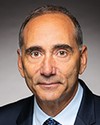You're right about the first factor, Mr. Généreux, because 90% of the electricity we now use to produce aluminum in Saguenay comes from our own hydroelectric power station.
Just imagine the situation 10 years from now, with all the uncertainties that scenario entails. When we consider our ambitions for aluminum production growth and its limits, including aluminum produced using ELYSIS technology, and when we consider how we want to decarbonize other elements in the value chain, including the alumina refinery in Vaudreuil, we have to admit that we'll need to electrify some things that aren't electrified today. We will very likely need more electricity in Saguenay―Lac-Saint-Jean than what our power stations can generate today.
Consequently, we will start by modernizing those stations. Speaking of which, our future investment program will include major funding to upgrade power stations in Saguenay―Lac-Saint-Jean. That's another indication of our commitment to the region.
We'll also have to consider how we can meet those needs, including perhaps by turning to new sources of renewable energy. This is a topic that we've begun to address in Quebec.





